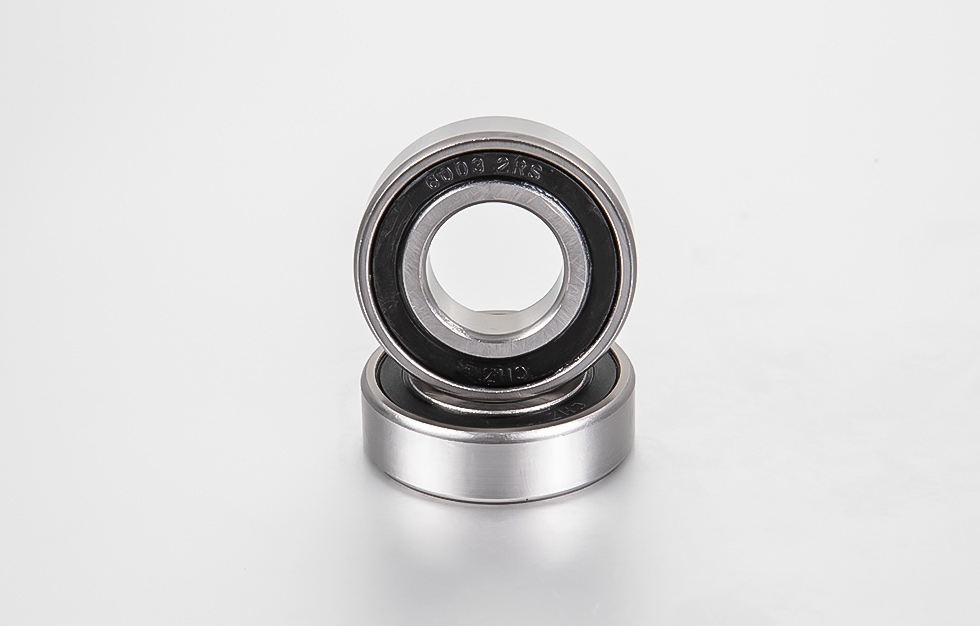News
Ningbo Hardchn bearing Co., Ltd.
Contact Us
Ningbo Hardchn bearing Co., Ltd.
ADD:No.501 Shizhu Rd, Linyu Foreign Investment Park, Jiaochuan Street, Zhenhai District, Ningbo city, China.
Tel:0086-574-86365365
Mobile:0086-(0)13858288142
Fax:0086-574-86454078
1. Rolling bearing matching system Under normal circums […]
1. Rolling bearing matching system
Under normal circumstances, the basic hole system will be used when the rolling bearing is matched, but if it is a standard part, the mating nature of the matched part is determined by the standard part. As far as rolling bearings are concerned, because they are standard parts, the part matching the outer ring adopts the base shaft system, and the shaft matching the inner ring adopts the base hole system.
The fit between the inner ring of the bearing and the shaft is a basic hole system, although the tolerance zone of all tolerance grades of the inner ring of the rolling bearing is below the zero line and the upper deviation is zero. The main reason is the special requirements of bearing coordination. In most cases, the inner hole of the bearing must rotate with the shaft, and the fit between the two must have a certain degree of interference.
Note: a) Common tolerance zone relationship diagram for bearing and shaft fit; b) Common tolerance zone relationship diagram for bearing and housing fit; ∆dmp: the deviation of the average inner diameter of a single plane of the bearing inner ring; ∆Dmp: a single plane of the bearing outer ring Deviation from the average outer diameter.
2. Selection of matching tolerance level of journal and bearing seat
The tolerance level of the hole and shaft that matches with the rolling bearing is closely related to the tolerance level of the bearing. Generally, shafts matched with /P6 and /PO bearings have a tolerance level of IT5~IT7, and most of the box holes are IT6~IT8.
3. The choice of matching nature
The selection of the matching nature of the bearing is to determine the basic deviation code of the journal and the bearing seat that matches the bearing.
The basis for selecting the matching properties of the bearing is: the type of load on the inner and outer rings of the bearing, the size of the load on the bearing, the working conditions of the bearing, the material of the hole and the shaft that matches the bearing, and the loading and unloading requirements.
1) Load type
●Local load: The composite radial load acting on the bearing is relatively static with the ring, that is, the direction of the load always acts on the local area of the ring raceway. Usually use small clearance fit or transition fit.
●Cyclic load: The synthetic radial load acting on the bearing rotates relative to the ferrule, that is, the synthetic radial load acts on the entire circumference of the ferrule in sequence. Usually use an interference or tight transition fit.
●Swing load: The synthetic radial load acting on the bearing and the bearing ring oscillate relative to each other in a certain area, that is, the synthetic radial load often fluctuates and acts on the part of the circumference of the ring raceway less than 180°.Note: a inner ring cyclic load, outer ring local load; b inner ring local load, outer ring cyclic load; c inner ring cyclic load, outer ring swing load; d inner ring swing load, outer ring cyclic load.

2) The size of the load
When the bearing is under load, the ferrule will deform, causing uneven force on the mating surface and causing looseness. Therefore, the fit should be tighter under heavy load, and looser under light load. Generally, loads are classified as follows:
●Light load: P≤0.07C;
●Normal load: 0.07C
●Heavy load: P>0.15C.
Among them: C is the rated load of the bearing, and the data can be found in the relevant manuals.
3) Working temperature
When the bearing rotates, the temperature of the ring is often higher than the temperature of the adjacent parts. The inner ring of the bearing may loosen the fit due to thermal expansion; the outer ring may tighten the fit due to thermal expansion. The influence of temperature should be considered when choosing a fit.
4) Rotation accuracy and rotation speed
When the bearing has a higher rotation accuracy requirement, in order to eliminate the influence of elastic deformation and vibration, the fit with clearance should be avoided, but it should not be too tight. The higher the bearing speed, the tighter the fit should be selected.
4. Determination of shape and position tolerance and surface roughness
In order to ensure the normal operation of the bearing, in addition to correctly selecting the tolerance level and fit of the bearing, the journal and the box hole, the shape and position tolerance and surface roughness of the journal and the box hole should also be required.
●Shape tolerance: mainly the surface cylindricity requirements of the journal and box hole.
●Position tolerance: mainly the runout tolerance of the end face of the shaft shoulder.
●Surface roughness: The value of surface roughness directly affects the quality of the fit and the strength of the connection. Therefore, all surfaces that match the inner and outer rings of the bearing usually have higher requirements for surface roughness.